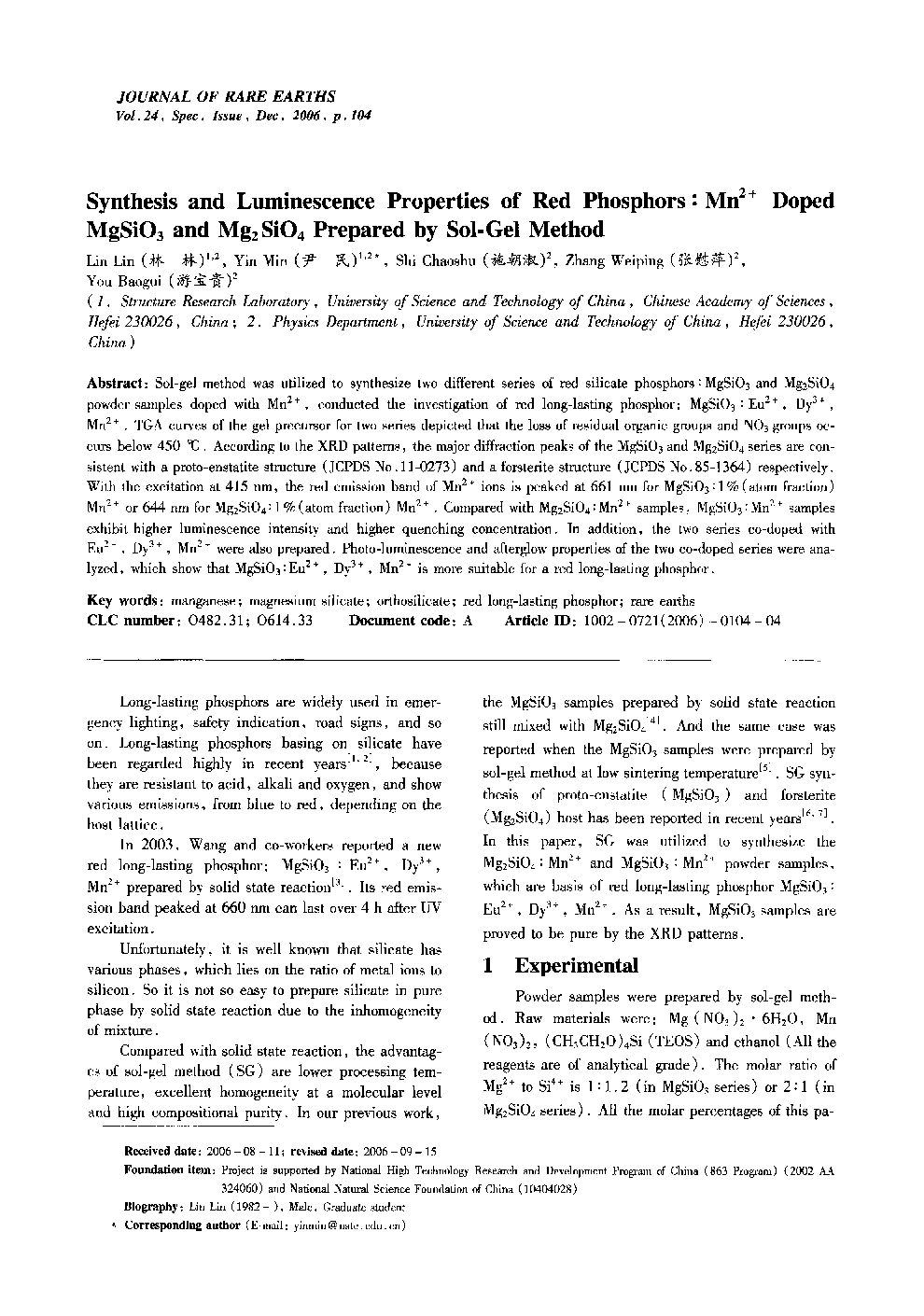| Article ID | Journal | Published Year | Pages | File Type |
|---|---|---|---|---|
| 1260786 | Journal of Rare Earths | 2006 | 4 Pages |
Sol-gel method was utilized to synthesize two different series of red silicate phosphors: MgSiO3 and Mg2SiO4 powder samples doped with Mn2+, conducted the investigation of red long-lasting phosphor: MgSiO3: Eu2+, Dy3+, Mn2+. TGA curves of the gel precursor for two series depicted that the loss of residual organic groups and NO3 groups occurs below 450 °C. According to the XRD patterns, the major diffraction peaks of the MgSiO3 and Mg2SiO4 series are consistent with a proto-enstatite structure (JCPDS No. 11-0273) and a forsterite structure (JCPDS No. 85-1364) respectively. With the excitation at 415 nm, the red emission band of Mn2+ ions is peaked at 661 nm for MgSiO3: 1% (atom fraction) Mn2+ or 644 nm for Mg2SiO4:1% (atom fraction) Mn2+. Compared with Mg2SiO4: Mn2+ samples, MgSiO3: Mn2+ samples exhibit higher luminescence intensity and higher quenching concentration. In addition, the two series co-doped with Eu2+, Dy3+, Mn2+ were also prepared. Photo-luminescence and afterglow properties of the two co-doped series were analyzed, which show that MgSiO3: Eu2+, Dy3+, Mn2+ is more suitable for a red long-lasting phosphor.
